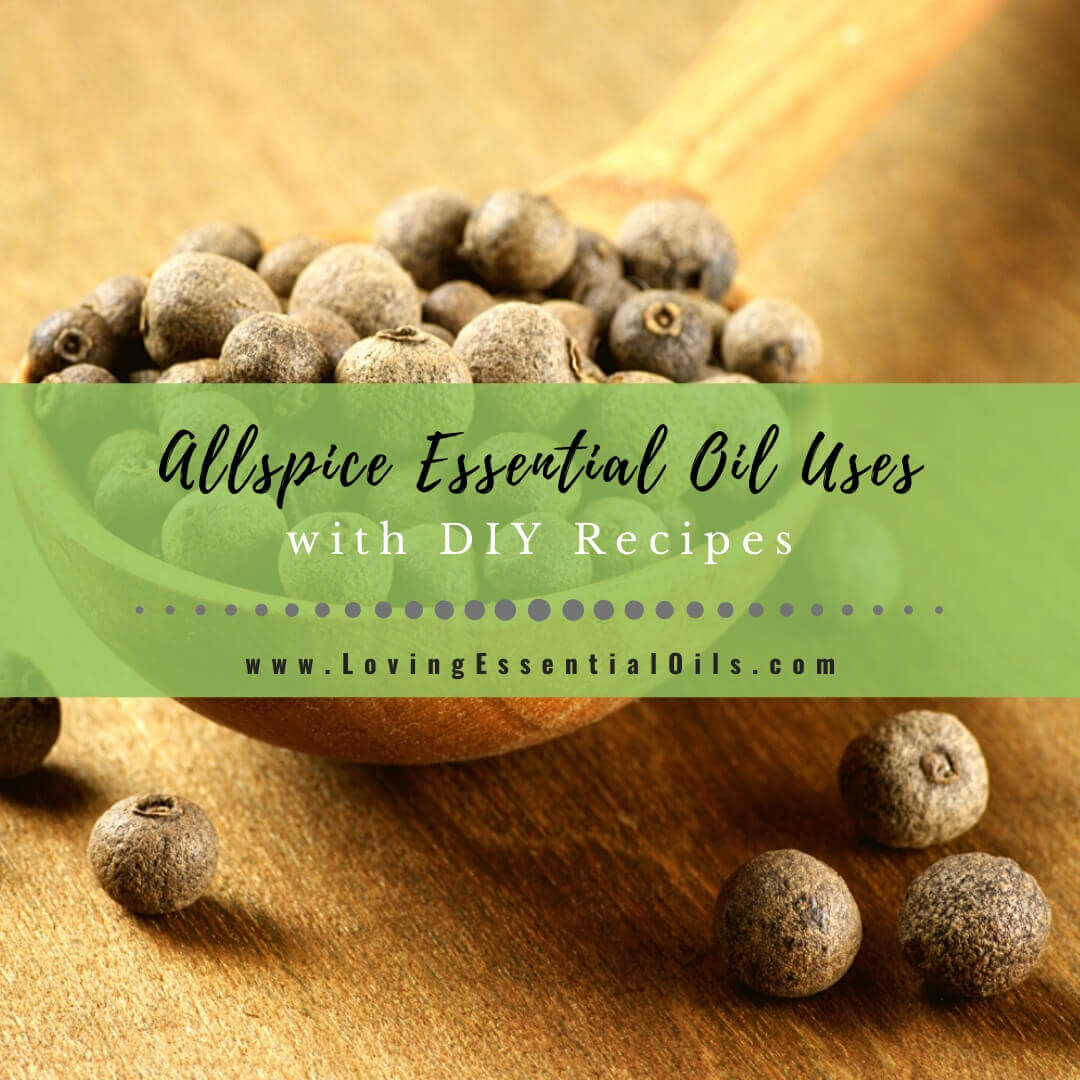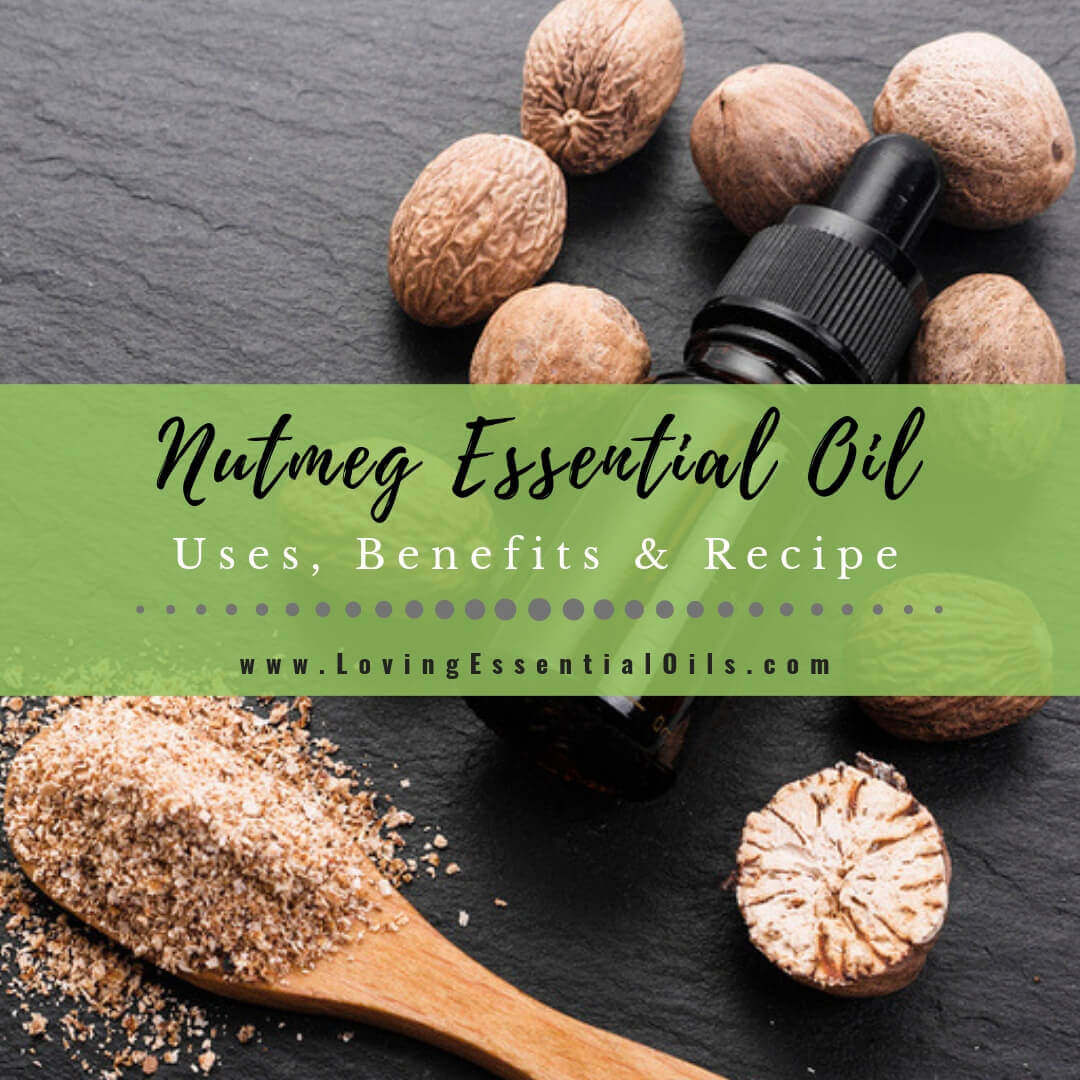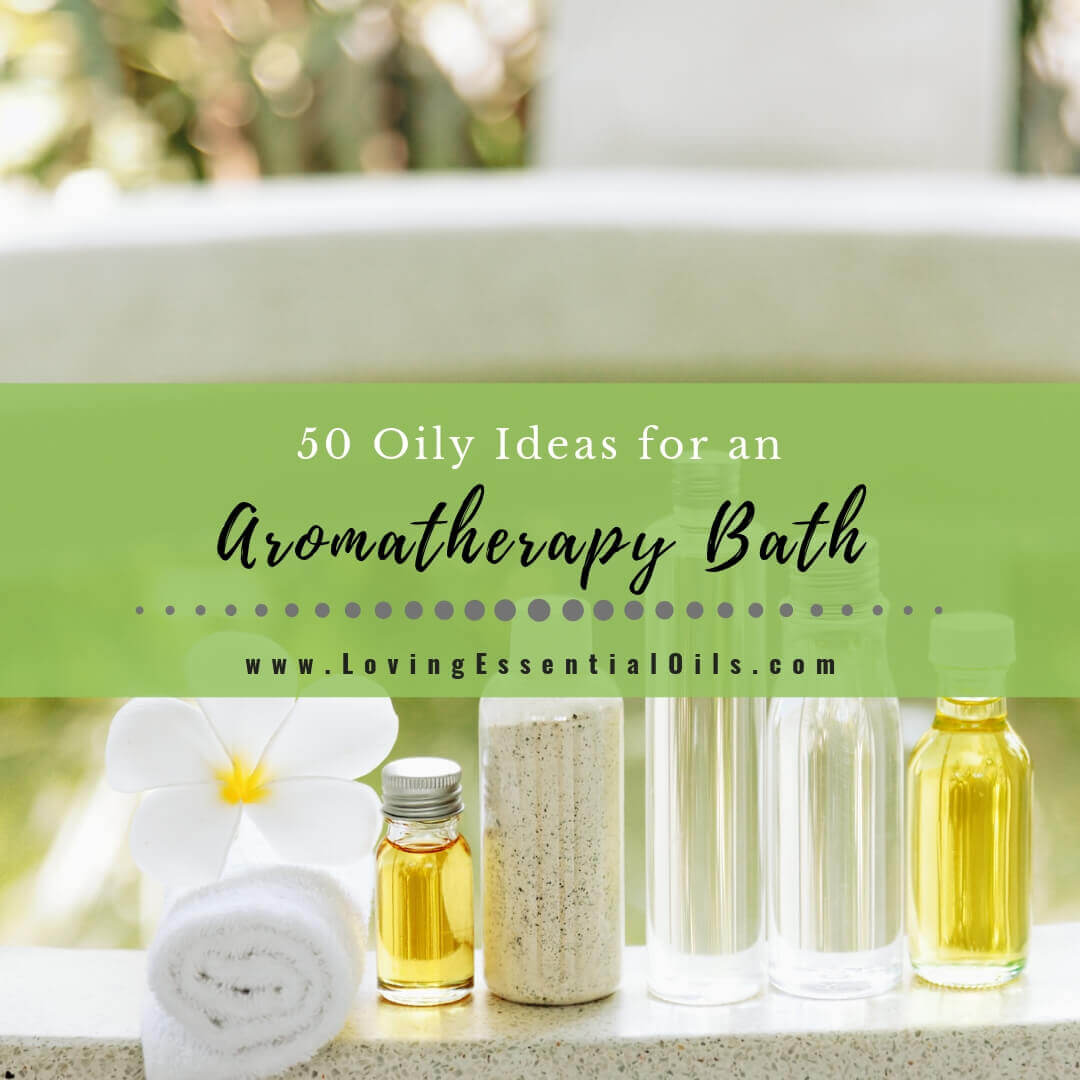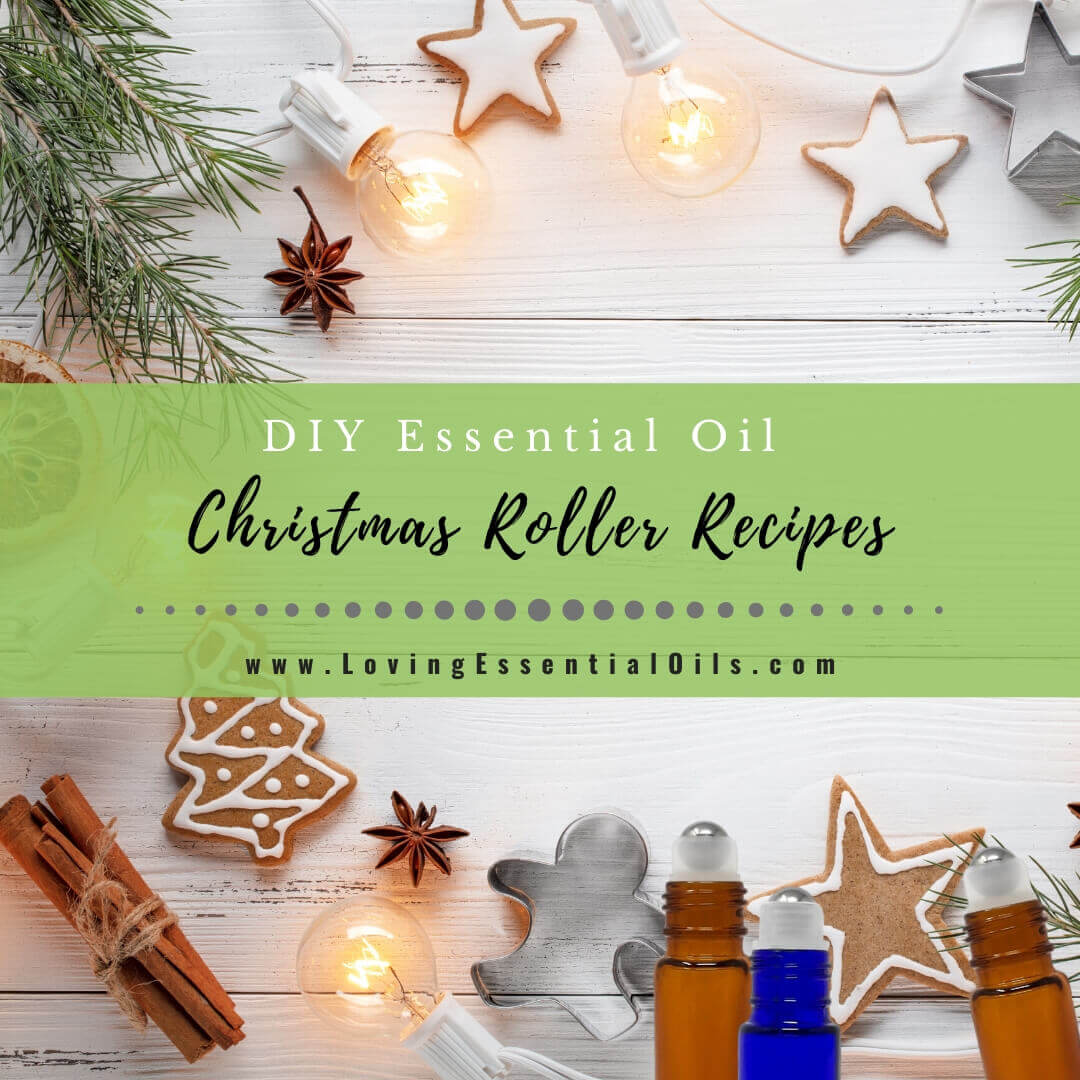Table of Contents
- Allspice Essential Oil Spotlight
- Allspice Essential Oil Blends Well With
- Allspice Essential Oil Benefits
- Allspice Essential Oil Uses
- Allspice Essential Oil Recipes
- Allspice Diffuser Blends
- Where to Buy Allspice Essential Oil?
- General Essential Oil Precautions
- More Essential Oil Blends and Oil Spotlights
Allspice essential oil is a spicy oil with an aroma true to the spice used in baking. Here, you will learn practical ways to incorporate it into your aromatherapy routine with our Allspice Essential Oil Recipes and Diffuser Blends.
The name “allspice” refers to its scent, which resembles a combination of cinnamon, nutmeg, and clove. Allspice essential oil has a sweet, spicy aroma that can add a nice twist to your favorite oil blends. It is also great for refreshing yourself.
Allspice is an evergreen tree indigenous to the West Indies and South America. Historically, it has been used as a digestive aid.
Keep reading to learn more about this exciting essential oil and how it can benefit your health and wellness.
Allspice Essential Oil Spotlight
Allspice essential oil (Pimenta dioica), also known as Jamaican pepper or pimento berry, has a sweet, spicy scent similar to cloves. The allspice tree can reach a height of about 30 feet. The fruits are picked before fully ripe and dried in the sun. The berries turn from green to a dull reddish brown during drying.
| Botanical Name | Pimenta dioica |
| Botanical Family | Myrtaceae |
| AKA | Jamaica Pepper, Pimento Berry |
| Note | Middle |
| Aroma | Spicy, sweet, woody |
| Extraction Method | Steam distilled |
| Plant Part Used | Fruit (berries) |
| Shelf Life | 4 years |
| Kid Safe? | No |
| Safety Concerns | Irritates the mucous membranes. Use in low dilutions when applied to the skin (less than 0.3% for topical use). |
Allspice Essential Oil Blends Well With
Allspice essential oil is a versatile oil that can be used in various ways. One of the most popular ways to use allspice oil is to create aromatic blends. Its warm, spicy scent goes well with other spice essential oils, such as clove, anise, nutmeg, and cinnamon.
Allspice blends well with:
- Cinnamon
- Clove
- Geranium
- Ginger
- Laurel Leaf
- Lavender
- Lemon
- Marjoram
- Neroli
- Nutmeg
- Orange
- Patchouli
- Peppermint
- Black Pepper
- Spearmint
- Ylang Ylang
Therapeutic Uses:
Arthritis, fatigue, muscle cramps, rheumatism, muscle/joint stiffness, chills, congested coughs, bronchitis, stomach cramp, flatulence, indigestion, nausea, depression, nervous exhaustion, neuralgia, tension and stress (from The Encyclopedia of Essential Oils by Julia Lawless, page 34).
Therapeutic Properties:
Antiviral, Antispasmodic, Calmative, Antibacterial, Analgesic, Muscle
Relaxant.
All Spice Essential Oil Substitutes
Allspice essential oil can be difficult to find and may not be on hand. Luckily, several substitutes can be used in its place.
Clove essential oil is among the most popular substitutes for Allspice essential oil. Clove oil has a similar spicy-sweet scent and can be used in many of the same ways.
Ginger essential oil is another great allspice essential oil substitute. Other spice essential oils, like nutmeg and cinnamon, are excellent choices.
Cinnamon oil has a strong, spicy aroma that can be used to add depth to any recipe.
Allspice Essential Oil Benefits
Allspice oil has a high content of eugenol, similar to clove oil. Allspice and clove oil share many of the same benefits and uses, which is why clove oil is the best substitute for allspice oil, as noted above.
Eugenol is a known irritant to mucous membranes and skin, so it should never be used at full strength when applied topically, dilute it in a carrier oil first.
Allspice essential oil has many benefits, including alleviating anxiety, reducing inflammation, and promoting healthy digestion. Here are more allspice oil benefits:
- Relieves muscle cramps and stiffness
- Acts as a mild sedative
- Calms indigestion and nausea
- Eases cold symptoms
- Relaxes the body and mind
- Has a warming effect (rubefacient)
- Grounding scent for cologne
- Localized numbing effect
- Protective against infections in cuts (antiseptic)
Allspice Essential Oil Uses
When creating a blend recipe, it's important to start with a small amount of allspice oil and then add other oils until you find a combination you like. Allspice oil can also be used on its own to create a pleasant and inviting environment.
Whether you diffuse it in your home or add it to your favorite lotion, allspice oil is sure to bring a smile to your face.
Muscle Rub
Its analgesic and anesthetic (numbing) qualities make it effective for pain. This oil helps to dull the sensation to the location it is applied to and can be used to decrease pain registered by the pain receptors (nociceptors). It has also been useful in relieving pain caused by neuralgia. Add one drop to a tablespoon of carrier oil and apply it to the sore area.
Massage Oil
Allspice makes a nice therapeutic addition to a massage. Add it to a massage blend to provide a gentle warming sensation that stimulates circulation and increases blood flow. Its pleasant scent can also assist with relaxation. Check out the allspice essential oil recipes section for DIY blends.
Immune Boost
Due to its antioxidant properties, it is excellent for supporting the body’s natural immune system. For immune support, try using a few drops in an aromatherapy inhaler blend; see our wellness inhaler recipe below.
Digestive Aid
This oil is wonderful for digestive issues. Allspice can help relieve digestive upset, gas discomfort, and nausea. It can also ease stomach cramps and spasms. Add one drop of allspice and two drops of ginger to a tablespoon of carrier oil for quick use. Then, massage onto your stomach in a clockwise motion.
Allspice Essential Oil Recipes
Are you looking for ways to include allspice in your DIY blends? Here are four simple yet effective essential oil blend recipes.
Allspice Muscle Rub Recipe |
This pain-relieving essential oil lotion blend can assist with sore and achy muscles.
Directions: Put the unscented lotion in the glass jar. Add drops of essential oils to the jar and mix well with lotion to blend together. Apply to the affected area. 2% dilution. You can use a carrier oil instead of unscented lotion if you prefer. |
Sweet Fire Massage Blend |
Try this oil blend!
Directions: Add all ingredients to the dropper bottle. Place the top on the bottle and shake to mix the oils together. Use for massaging a specific area or general body massage. It works great for muscle cramps and discomfort, too. 2% dilution. |
Tummy Calm Roller Recipe |
Calming essential oil blend to ease tummy discomforts and digestive issues.
Directions: Add drops of oil to the roll-on bottle and fill the rest of the bottle with jojoba carrier oil. Roll onto the belly in a clockwise motion. |
Wellness Spice Inhaler Blend |
Take these inhalers on the road
Directions: Add oils to your personal aromatherapy inhaler. Use as needed when you want an immune boost. |
Allspice Diffuser Blends
Allspice oil is a favorite in diffuser recipes, especially in fall blends. Blend it with cinnamon, clove, and sweet orange to create an immune-boosting autumn aroma.
Add one of the allspice essential oil blends below to your aromatherapy diffuser with recommended water for your diffuser tank. I like to use a 100-200 ml water tank diffuser but you can use whatever size you prefer, adjust drops as desired. Read more about diffusing essential oils.
Allspice and Orange Diffuser Blend
Here is a spicy citrus oil blend with a hint of lavender. Turn on and enjoy this uplifting and revitalizing recipe.
- 3 drops Allspice
- 2 drops Orange
- 1 drop Lavender Oil

Welcome Home
Vanilla helps to sweeten this diffuser blend, which will freshen up your home and give it a welcoming scent.
- 3 drops Vanilla
- 2 drops Allspice
- 1 drop Sandalwood

Peaceful Morning
Here is an uplifting blend to brighten your morning. Its scent is energizing and refreshing.
- 5 drops Bergamot
- 3 drops Allspice
- 2 drops Pine

Autumn Spice Diffuser Blend
Need some spice in your life? Here is a powerful all-spice blend!
- 4 drops Allspice
- 3 drops Nutmeg
- 2 drops Cinnamon Bark (or Leaf)

Relaxing Meadow
Allspice blends well with floral oils, including chamomile and ylang ylang. Give it a try.
- 3 drops German Chamomile
- 2 drops Ylang Ylang
- 2 drops Allspice

Where to Buy Allspice Essential Oil?
Buy only high-quality, 100% pure essential oils when purchasing. If you are looking to buy allspice essential oil, here are some brands we like:
General Essential Oil Precautions
Never use essential oils undiluted in the eyes or mucous membranes. Do not take them internally unless you are working with a qualified practitioner. Keep out of reach from children.
Use essential oils with extreme caution on children; be sure you have researched the oil and that it is safe for use on kids.
If applying an essential oil topically (on your skin), you may perform a small patch test to an insensitive part of the body, use 1-2 drops in a teaspoon of carrier oil like jojoba oil, read more here.
If you are pregnant, breastfeeding, epileptic, or under a doctor’s care, consult your physician. For more information on oil safety issues, read Essential Oil Safety by Robert Tisserand and Rodney Young.
Share on Pinterest

More Essential Oil Blends and Oil Spotlights
If you liked the allspice essential oil recipes and diffuser blends, check out more oily spotlight posts:





